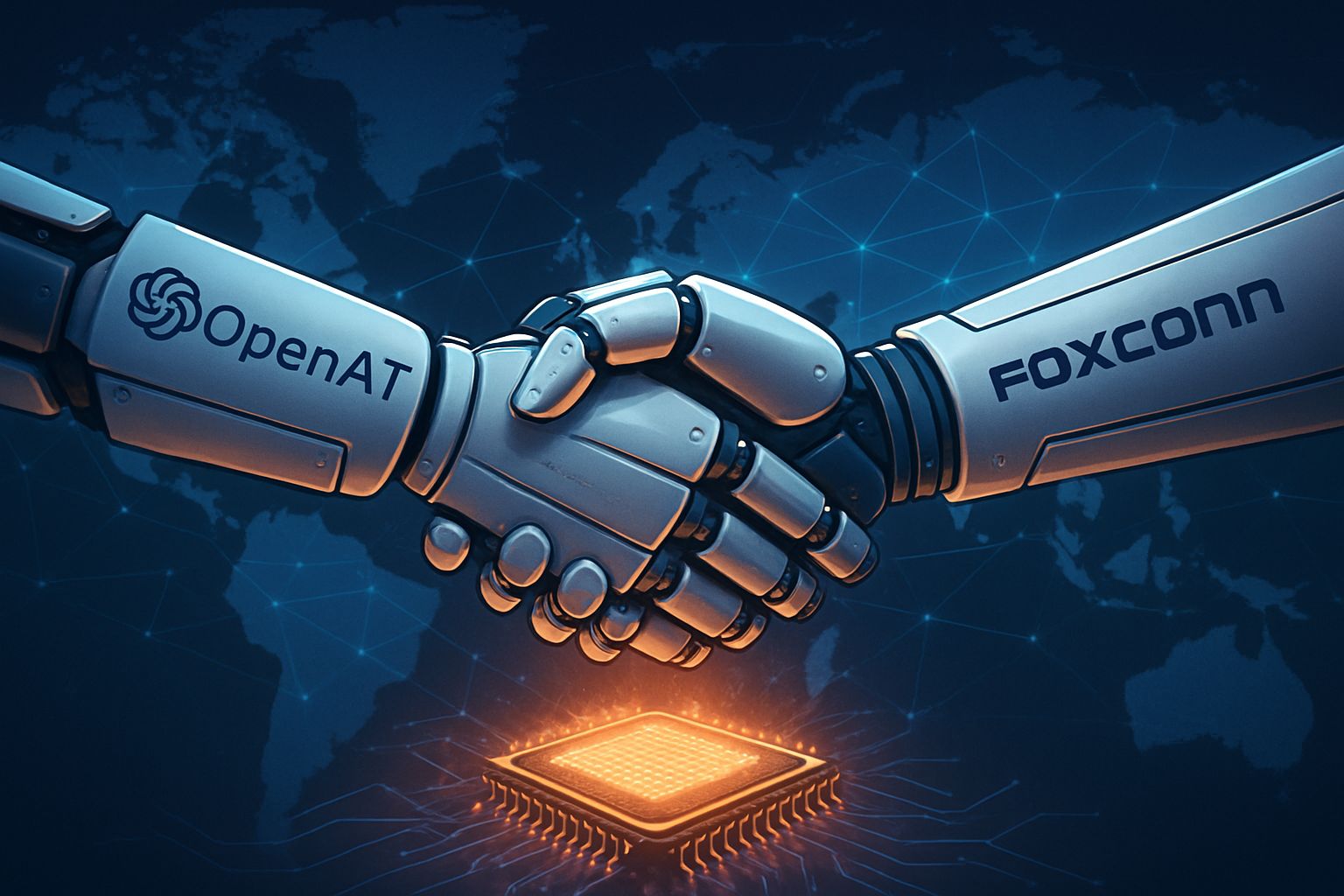
AI CERTS
1 day ago
Executive AI Diplomacy: Altman, Foxconn Seal Hardware Pact
Consequently, investors treated the meeting as an early validation of Foxconn's aggressive data-center push. Meanwhile, Reuters reported OpenAI expects to spend $16 billion on rented compute this year alone. Such scale forces partnerships that tackle infrastructure pain points head-on rather than piecemeal.
This article dissects the Young Liu collaboration, market implications, and the engineering hurdles still looming. It also explores why cooling-power-IT challenges can derail even the boldest operational partnership. That blend of executive AI diplomacy and manufacturing muscle could reshape the global rack market. By unpacking facts and quotes, professionals can benchmark their strategies against this high-stakes case study.
Altman Meets Young Liu
OpenAI publicly announced its alliance with Foxconn on 20 November 2025. Earlier, Young Liu confirmed he hosted Altman in Foxconn’s Taiwan offices during the September meetings. Moreover, that quiet engagement cemented the Young Liu collaboration. Subsequently, Foxconn told journalists it could assemble 1,000 AI racks weekly, scaling to 2,000 next year. Altman framed the alliance as part of executive AI diplomacy built to reindustrialize America. In contrast, Liu emphasized Foxconn’s desire to diversify beyond smartphones into higher-margin infrastructure. The meeting signaled real intent beyond headlines. Consequently, stakeholders began tracking deliverables, not just promises, which leads directly to deal strategy.

Strategy Behind The Deal
OpenAI needs thousands of specialized racks for model training, inference, and rapid iteration. Meanwhile, Foxconn owns global factories, logistics networks, and political leverage in multiple jurisdictions. Therefore, the operational partnership merges complementary strengths without immediate purchase obligations. OpenAI gains early access prototypes, while Foxconn de-risks capacity investments through shared design data. Moreover, both parties jointly tackle infrastructure pain points such as thermal envelopes and supply bottlenecks. Executives label this template executive AI diplomacy, because it balances economic nationalism with global specialization. The structure promises flexibility for buyers and sellers. However, supply chain ambitions raise fresh questions.
Supply Chain Ambitions Rise
Reuters estimates OpenAI could spend $400 billion on compute rentals by 2029. Consequently, securing manufacturing slots for GPUs, memory, and racks becomes existential. Young Liu collaboration offers Foxconn priority insight into OpenAI demand curves. Additionally, Foxconn told HHTD attendees it may invest up to $5 billion in U.S. sites. In contrast, competing integrators struggle with cooling-power-IT challenges as facilities hit thermal ceilings. Therefore, Foxconn markets its scale as an antidote to those infrastructure pain points. Altman's executive AI diplomacy thus extends beyond boardrooms into procurement trenches. The numbers underscore enormous capital flows. Next, consider the engineering details.
Infrastructure Design Deep Dive
Balancing Cooling And Power
High-density GPU racks dissipate over 80 kilowatts per cabinet. Moreover, cooling-power-IT challenges include liquid loops, dielectric fluids, and power redundancy. Foxconn engineers co-design chassis airflow with OpenAI software profiles. Subsequently, prototypes move into U.S. pilot lines for vibration and thermal testing. These tests spotlight remaining infrastructure pain points like high-bandwidth networking and surge protection. Validated designs shorten time to mass production. Consequently, financial models gain accuracy.
Ensuring Supply Chain Security
Altman insists that strategic components must be built onshore. Therefore, executive AI diplomacy involves negotiating incentives with U.S. states and agencies. Meanwhile, Foxconn seeks subsidies similar to semiconductor fabs. Policy alignment accelerates facility groundbreakings. However, market risks remain considerable.
Market And Risk Outlook
Analysts warn of over-capacity if AI demand cools after hype cycles. Nevertheless, share prices jumped when the Young Liu collaboration became public. Investors love narratives that ease scaling hurdles and monetize data growth. In contrast, skeptics highlight that no binding orders exist yet. Further, supply shortages for memory and advanced packaging may delay deployment. Risk models remain fluid at this stage. Skills gaps also deserve attention.
Skills For AI Executives
Boards now expect leaders to grasp thermals, CapEx models, and geopolitical supply maps. Consequently, many managers study frameworks behind executive AI diplomacy. Professionals can enhance their expertise with the AI Executive™ certification. Moreover, curricula dissect operational partnership governance, audit trails, and resilience metrics.
Key capabilities include:
- Quantify thermal imbalance using facility dashboards.
- Model build-operate-transfer timelines for large data halls.
- Negotiate tax credits that offset capital outlays.
Mastery of these topics elevates negotiation leverage. Finally, consider future milestones.
Next Steps For Industry
Foxconn plans to publish rack performance metrics at next year's Hon Hai Tech Day. Meanwhile, OpenAI will evaluate early units inside Oracle's Stargate region. Subsequently, deal success will hinge on resolving cooling-power-IT challenges at scale. Therefore, executive AI diplomacy will likely extend to memory suppliers and network vendors. Young Liu collaboration could even expand to include sovereign funds seeking infrastructure exposure. Consequently, the operational partnership may become a template for cross-border industrial policy. Upcoming quarters will validate this thesis. Let us recap core insights.
Sam Altman and Young Liu have turned quiet meetings into a high-profile hardware blueprint. Moreover, their executive AI diplomacy unites design, capital, and policy on a single timeline. The operational partnership gives Foxconn volume potential while guarding OpenAI's optionality. However, infrastructure pain points and stubborn cooling-power-IT challenges still demand engineering rigor. Nevertheless, early capacity targets and onshore production aims show credible progress. Consequently, future boardroom deals will likely rely on executive AI diplomacy for alignment. Explore the AI Executive™ certification and drive strategy forward.



